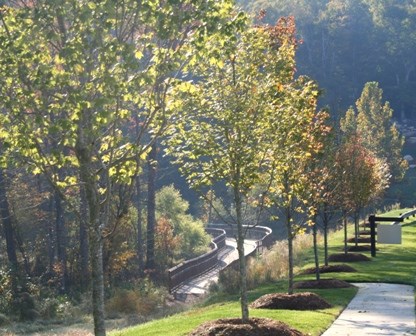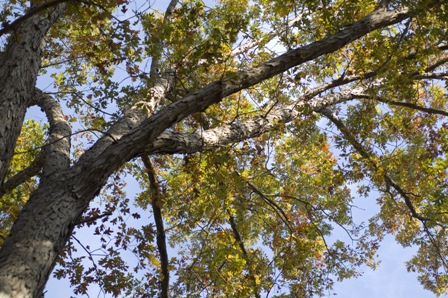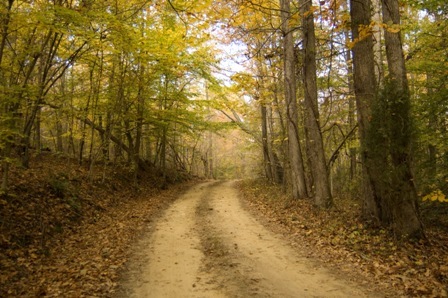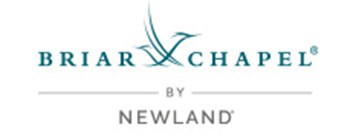
16 June . 2011
Green Blog Focus: Water Quality
by Shannon McSwiney
Marketing Manager, Newland Communities
To bring you up to speed. At the start to this green blog series, we identified the key areas of development where we felt we could make the most immediate impact and have committed to expanding more on each to give readers greater insight into what makes Briar Chapel "GREEN". The key areas are: natural resource and wildlife habitat protection, water quality, vegetation protection and enhancement, green home building, and integration with the community/community outreach.
Today we will focus on water quality. For the most part, I wrapped the attention to water quality into a concise paragraph within my previous blog, but felt I should attempt to go into a little more detail about some of the practices here, because water quality / water conservation is a BIG deal to the greater watershed and environment. See, I told you it would be difficult to classify any one of these key areas as more important than the next!
 |
We discussed that the land plan itself was designed in such a way as to minimize the impacts to water quality by preserving a large amount of open space, implementing erosion and sediment control practices, incorporating stormwater treatment facilities that will minimize and treat runoff, and managing the wastewater system.
|
A wastewater treatment plant is active onsite at Briar Chapel to treat all wastewater generated by the occupied homes and buildings within the community. This treated wastewater will be used as spray irrigation on open spaces (other communities and golf courses locally and around the country already use this practice). In addition to providing irrigation to open space areas, we minimize the impact on the local water supply. In fact, in the few short years we have been open and operating (both business and occupied homes) in the community we have been able to track the water usage/consumption and we are well below the typical flow rates generated for estimated current occupancy. This most definitely has a direct correlation to the green standards required in all Briar Chapel homes. Talk about efficient!
 Impervious surface management is always a critical factor in large, master-planned communities. An impervious surface is that which is covered by an impenetrable surface; roads, sidewalks, parking lots. Surfaces can consist of asphalt, concrete, brick, stone, and rooftops. There is a lot of number crunching that goes into determining who gets what and how much per lot per home and whose water drains where (did you follow me?) Now if you are technical in nature, you may not like this explanation but I am trying to break it down to an understandable reference. There are also various governing bodies in charge of setting the rules from the local Municipality, Department of Transportation, Department of Water Quality, Department of Environment and Natural Resources and so on. All to say that minimizing the amounts of impervious surfaces decreases stormwater runoff volume which in turn protects water quality.
Impervious surface management is always a critical factor in large, master-planned communities. An impervious surface is that which is covered by an impenetrable surface; roads, sidewalks, parking lots. Surfaces can consist of asphalt, concrete, brick, stone, and rooftops. There is a lot of number crunching that goes into determining who gets what and how much per lot per home and whose water drains where (did you follow me?) Now if you are technical in nature, you may not like this explanation but I am trying to break it down to an understandable reference. There are also various governing bodies in charge of setting the rules from the local Municipality, Department of Transportation, Department of Water Quality, Department of Environment and Natural Resources and so on. All to say that minimizing the amounts of impervious surfaces decreases stormwater runoff volume which in turn protects water quality.
So where does all of the runoff from these impervious surfaces go? There are several ways to treat stormwater and at Briar Chapel, several BMP's are being employed. Throughout the Briar Chapel community, the primary stormwater treatment will be through the use of water quality ponds - there will be approximately 40 identified stormwater management facilities throughout the development. These ponds have been designed to remove 85 percent of the total suspended solids (TSS) - these are the actual particles present in the water that can be trapped by a filter (and one of the ways water quality is measured) as well as at least 25 percent of the total nitrogen coming to them. Again, all relating back to the better protection of our wildlife and natural habitats on site.
If you are like me, this kind of information while overwhelming is also interesting - it provides greater insight to the "behind the scenes" preparation and studies on the land well before a single scoop of dirt is moved or the first footings are even conceptualized for the homes. A lot of thought and brain power has been put to the test to get things "just right". We work with experts in each respective field to give us the pieces to the puzzle that ultimately come together in a well choreographed performance calledThe Entitled Land Plan.
Stick with me for the next installment, where I'll continue to break down these EXTREMELY technical topics into bite size bits of information that are (hopefully) more easy to digest. We'll talk vegetation protection and enhancement - everything from the landscaping of the homes to protected open space.
